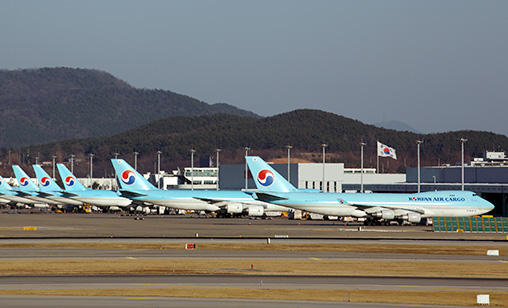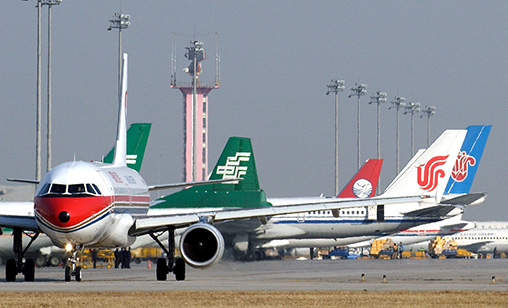Orient Aviation 2020 Year in Review
Financial flameout
For the first time, the International Air Transport Association (IATA) and the Association of Asia Pacific Airlines (AAPA) held their critical annual summits online. Delegates at the November gatherings heard industry losses would shrink in 2021 but airlines would be burdened long-term with borrowings negotiated to survive the virus. Associate editor and chief correspondent, Tom Ballantyne, reports.
December 1st 2020
It may be cold comfort for the region’s airlines, and for that matter the rest of the world’s carriers, but the industry will improve in 2021. Read More » That was the message to hard-hit carriers as their leaders met last month at leading commercial aviation summits in Europe and the Asia-Pacific. In virtual gatherings the International Air Transport Association (IATA) staged its annual general meeting from Amsterdam and the Association of Asia-Pacific Airlines (AAPA) conducted its annual Assembly of President in the same format.
In a fiery summary of aviation’s global state of affairs, IATA director general, Alexandre de Juniac, who had earlier announced he would step down from the airline lobby group at the end of March, laid bare the issues global commercial aviation confronts. Ten months on from the pandemic’s beginnings “the airline industry is in crisis. Efforts to control the spread of the coronavirus have resulted in the greatest de-connecting of people since the Second World War”, he said.
 |
“Borders are effectively closed. Our freedom of movement has been severely restricted. The impact on aviation has been catastrophic. International passenger travel is down 89%. Domestic by 43%. With just 1.8 billion people expected to travel this year, we are back at 2003 levels. Cargo is a bright spot. But with volumes 8% below 2019 it is hardly good news.”
There was similar frustration, particularly at inconsistent border closures and quarantine measures, expressed by the AAPA’s director general, Subhas Menon, who quipped American Express advises us “don’t leave home without it”, but the motto of the region’s governments seemed to be “don’t leave home”.
Grim statistics tell the story of the industry’s financial flameout. In the Asia-Pacific, where most AAPA members are major long-haul operators, international flying is being battered, operating at 11% of 2019 numbers. On the other hand, the region’s domestic traffic is back to 67% of pre-crisis levels with much of the recovery due to China’s local carriers returning to 2019 operating demand.
Asia-Pacific carriers will lose $30 billion in 2020 and jobs supported by aviation in the region will drop from 47 million to 22 million by year end, said IATA regional director airports and external relations Asia-Pacific, Vinoop Goel, in a briefing last month.
In 2020, net losses at the region’s carriers will be $31.7 billion, which are forecast to shrink to $7.5 billion in 2021, IATA said.
Globally, the situation is just as dire. IATA chief economist, Brian Pearce, said airlines would lose $118.5 billion this year, up from $84 billion projected in June. The industry body expected the world’s airlines to lose another $38 billion in 2021 compared with its previous forecast of $15 billion.
Although the 2021 forecast is a significantly reduced amount over this year, it is still “much more than the industry lost in the previous crises of 9/11 and the [2008] global financial crisis,” Pearce said. Passenger numbers are forecast to be 2.8 billion in 2021, 1.7 billion short of full-year 2019.
 |
Possibly most serious of all are the long-term consequences on airline balance sheets of the pandemic. Industry calculations are that the average operator will run out of money by the end of the first quarter of 2021.
IATA does not expect airlines to be cash positive until the end of next year, at the earliest. Around 50 airlines worldwide either have shut down or entered bankruptcy protection. Those that are surviving are mostly doing so because of government aid, namely $173 billion in direct or indirect state support, said de Juniac. “But that has come at a huge cost,” he said.
As a result of measures to raise survival funds, airline debt has soared by $220 billion to more than $650 billion, a financial burden that will take airlines years to pay down. De Juniac urged governments to support airlines in other forms.
“Bridging airlines to the recovery is one of the most important investments governments can make. It will save jobs and kickstart the recovery in the travel and tourism sector, which accounts for 10% of global GDP. More financial support will be needed and it must not increase debt,” he said.
“A vaccine is the permanent solution we need,” said de Juniac. “Recent news on progress is encouraging. IATA is working with the World Health Organization (WHO), UNICEF, Gavi and others in the COVAX initiative. This will ensure aviation is prepared, literally, to deliver.
“Borders must be opened for distribution, cold-chain logistics facilities need to be available with trained staff and security measures must be airtight. Passenger operations with belly capacity must be scaled up. This will be the largest and most complex logistical exercise ever. The world is counting on us. And we will not disappoint.”
But “we cannot wait for vaccine distribution to re-open borders for travel. An immediate solution exists”, he said. “We could safely open borders today with systematic COVID-19 testing. We have the technology. Rapid antigen tests are delivering cost-effective results, with over 95% accuracy, in 15 minutes or less. New testing technologies under development could be even better,” he said.
 |
At the AAPA Assembly of Presidents member carriers adopted several resolutions, reiterating calls for “harmonised and coordinated” travel restrictions among countries in the region, “so that they are targeted, balanced, transparent and flexible in duration”.
They advocated setting up a “robust international testing framework” for pre-departure coronavirus tests and called on governments to provide more support for AAPA members.
Menon said airlines saw the establishment of travel bubble arrangements – such as the recently announced and now delayed Singapore-Hong Kong initiative – as a “big step in the right direction” to restarting cross-border travel.
The region’s airport sector, which accounted for 3.1% of Asia-Pacific GDP and supports nearly 50 million jobs, urgently needed regional coordination mechanisms to overcome the unprecedented damage to the travel and tourism sectors, the joint declaration signed by the AAPA, IATA and Airports Council International (Asia-Pacific) at the conclusion of the Assembly said.
Menon said to those who argued against government support for the industry, this “existential crisis” was not of the airlines own making. “If airlines can’t fly to earn their keep it’s difficult to overcome their costs. Governments need to support their airlines,” he said.
De Juniac told his members “airlines will approach 2021 hobbled and on life support”. “There will be long-term consequences to this situation. The landscape of aviation has shifted. Many governments are now major airline investors. There are legitimate concerns about how long they will stay and there is a risk of backsliding towards re-regulation and protectionism,” he said.
Ultimately, IATA and the AAPA were confident the industry would eventually recover and grow. “Together, we have experienced many crises,” said de Juniac. “None rivals the scale of COVID-19. But all taught us resilience. The months ahead will challenge us as never before. But resilience is in aviation’s DNA. We will re-connect the world. Our mission is unchanged. We are the business of freedom.”